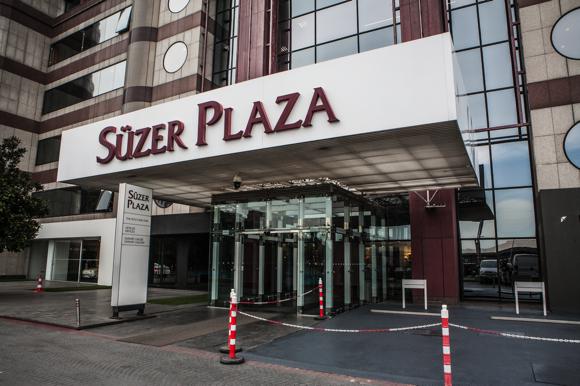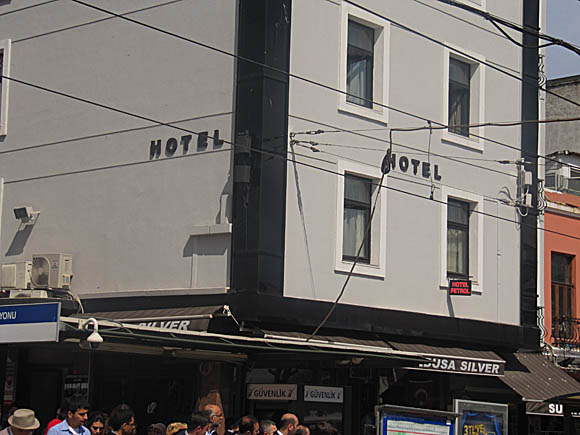Teams, tales and tips – a guide to the local game
For the football traveller, few settings are as sublime as that of Istanbul’s. And few European cities – with the arguable exceptions of Split, Naples and Marseille, one-club hubs all – demonstrate a passion for the game as this one that straddles two continents.
Matches involving Istanbul’s original big three clubs, Galatasaray, Fenerbahçe and Beșiktaș, where all but nine Turkish titles have gone since the first in 1959, can be very fiery affairs indeed. Occasionally these passions can spill over into tragedy – ‘Welcome To The Hell’ is the infamous banner greeting for any visiting English team and their fans.
Attempting to lose this image, Istanbul has recently bid to host major tournaments, losing out to France to stage Euro 2016 and Germany for the 2024 tournament. In line with these ambitions stands the Atatürk Olympic Stadium, scene of Liverpool’s dramatic triumph in the Champions League final of 2005.
In 2013, it was also the scene of serious rioting by Beșiktaș fans, a mess of damage that caused a derby game with Galatasaray to be abandoned. Ten years on, in 2023 it stages another Champions League final.

Beșiktaș now have their own stadium, the Vodafone Park, opened in 2016. A gentle and picturesque stroll from the main square of Taksim, Beșiktaș is by far the most central club in Istanbul. Their fans now longer have to trek way out to the Olympic Stadium in the far north-west of this two-continent megalopolis of 5,000 square kilometres, and 14 million-plus people. Thankfully, Istanbul’s shining new metro network now extends right out here to the suburbs.
Record title-winners and 2019 champions Galatasaray, the only Turkish side to bring home a European trophy, are also located north, in Șișli, where the Nef Stadium also hosts the Turkish national side.
Only Fenerbahçe are on the Asian side, providing a memorable match-day journey over the Bosporus.

Each of the big three was formed during the old Ottoman days. The imperial rulers frowned upon the foreign influence of football, so the trio were based in areas with large Christian and Jewish populations, and well-to-do foreign schools.
The founder of the post-Ottoman Turkish republic, Mustafa Kemal Atatürk, was more cosmopolitan in outlook, and also a Fenerbahçe fan. By the 1920s and 1930s, there was a thriving local Istanbul league and regional play-offs, the forerunner of the current Turkish League. When Beșiktaș debuted in the European Cup in 1958, drawing with the great Real Madrid, they had entered as winners of the Federation Cup.
A year later, the National League was formed, and the trophy didn’t leave Istanbul until 1976. None of the big three has ever been relegated.
In recent years, city’s fourth club, Istanbul Bașakșehir, has come to the fore, winning a first title in 2020. Formerly Büyükșehir Belediyespor (BB for short), they play at the Fatih Terim Stadium, opened in 2014. The original Istanbul BB were formed by an amalgamation of several municipal clubs in 1990 and had been holding their own in the top flight while playing at an echoing, mainly empty Olympic Stadium. The district of Bașakșehir is in the same north-west outskirts of the city.

Traditionally the fourth club was always Istanbulspor, who made the UEFA Cup in 1998 but suffered financial collapse shortly afterwards. Kept afloat by the government, the club worked its way back up the league ladder and gained promotion to the top tier in 2022.
The club’s Necmi Kadioğlu Stadium is located in distant Esenyurt, in the far west of the city, beyond the airport. The extension to the M7 metro line should run in this direction by 2024-25. Until then, your best bet is to take the Marmaray suburban rail line (marked as B1 on some maps) from the central hub of Yenikapi to Florya 25mins away, trains every 15mins. From there, a taxi should take 15mins and cost around €8. The stadium has its own stop on the 142K bus line, but this is only convenient if you’re way, way out west anyway.
In 2013, Beyoğlu-based Kasimpașa gained promotion to join their city rivals in the Süper Lig and have stayed there ever since. Their Recep Tayyip Erdoğan Stadium is a 15min climb from the terminus of the light-blue M3 line, Bașakșehir Metrokent, or a quick journey by taxi or shared minibus, dolmuș.
Getting Around
Arriving in town, local transport and timings

A Turkish visa for citizens of most countries is available online and at the city’s two airports, Istanbul and Sabiha Gökçen, 40km (25 miles) west and 45km (28 miles) south-east of the city respectively.
Note that conversion rates for the Turkish lira are approximate, given the astonishing depreciation of the local currency. Istanbul is more of a cash economy and cards aren’t accepted when paying for public transport or taxis.
A half-hourly HAVAIST shuttle bus serves both airports. From Istanbul Airport, the bus (TL74/€3.65) runs every 30mins to the Point Hotel by the focal square of Taksim, journey time around 1hr 40mins. Alternatively, the H2 metrobüs runs every 15mins to the nearest metro station of Șișli-Mecidiyecöy, journey time 100mins. This is halfway up green line M2, directly linked with focal Taksim, two stops away. The M11 metro line direct from the airport to either Gayrettepe or Halkali via the Olimpiyat stadium stop opens later in 2023, overall journey time 1hr to either terminus.
A taxi to town should cost around TL400-TL500/€20-€25 and take 1hr 20mins.
From Sabiha Gökçen, the half-hourly HAVAIST (TL110/€5.50) takes 90mins to Taksim. Alternatively, the M4 metro line runs all the way to Kadiköy, the main transport hub on the Asian side, near Fenerbahçe, journey time 50mins. A taxi to town will cost TL400-TL500/€20-€25. Allow at least an hour. Many hotels have a paid transfer service from either airport – though it’s often more expensive than a regular taxi.


Public transport consists of a huge metro network, tramway, light rail, buses, trams, a funicular and boats. A single ticket costs TL15/€0.75 or it’s just under TL10/€0.50 by rechargeable Istanbulkart (TL50/€2.50), available from yellow biletmatik machines at both airports and most stations. You should buy the anonymous (anonim) version and charge it by feeding lira notes into the machine – it doesn’t accept credit cards. Refunds are tricky and change isn’t given, so try not to overload it.
There are no fare zones and no day tickets. The Istanbulkart is valid for up to to five passengers and all forms of transport except for shared minibuses or dolmuș. These run on set routes and drivers accept cash only, usually the equivalent of around €1.
The T1 tramway calls at the main sights and transport stops, including Sirkeci main train station, home of the old Orient Express.
In town, taxis are everywhere – the minimum fare is TL28/€1.40 and traffic can be dreadful. Expect to pay around TL65/€3.20 for a journey such as Sultanahmet to Beșiktaș.
Where to Drink
The best pubs and bars for football fans







Although the main metropolis of a Muslim country, Istanbul does not stint on alcohol, Efes beer and raki spirit being readily available at most establishments. Beyoğlu is the traditional hub of bar culture, particularly on venue-lined Nevizade.
In Taksim, the authentic, two-floor James Joyce pub (Balo sok 26) offers TV football and occasional live music. A couple of buildings along, at Yeșilçam sok 25, the stripped-back Pendor attracts an alternative rock crowd.
Also close, the U2 Istanbul Irish Pub at Bekar sok 21, between Tarlabași boulevard and Kurabiye sok puts live music before live sport but is decked out in football memorabilia. Opposite, the RocknRolla Beyoğlu appeals to honest beer drinkers. The Bar-Ish next door is also worth a look-in. The nearby Corner Irish Pub at Meșrutiyet cad 11A is TV screen city, with seats outside as well.








For a few drinks with a view, the Beer Port is a convivial spot in Beșiktaș. In the same neighbourhood, the street of Șehit Asim cad contains the United Pub (No.26) and Beer Plus across the street, both decent choices to watch the game. Alongside, The Hope is lively and contemporary while the Totem Pub is more food-oriented.
In Fenerbahçe, The North Shield (Bağdat cad 183) features Sky Sports TV for Premier matches and a pub-like interior.
Where to stay
The best hotels for the stadiums and city centre







The Istanbul Insider has tips on where to stay and a link to booking.com.
Affordable hotels are dotted around the transport hubs of Sultanahmet and Taksim. To stay close to the Beșiktaș stadium, then the Ritz-Carlton literally overlooks it, a snazzy five-star with an outdoor spa, fine dining and fabulous views. Also close, just the other side of the Dolmabahçe Cafe, the four-star Mercure Taksim has its own gym and restaurant.
The notch-above Pierre Loti provides a spa and terrace bar/restaurant while the mid-range Orient Express plays up its location close to Sirkeci station. Though you won’t find Poirot in the lobby, it does have a pool and panoramic restaurant. To stay where Agatha Christie did, in the lap of fin-de-siècle luxury, the Pera Palace Hotel is a gorgeous reconstruction from the golden age of travel. Your budget should at least stretch to a drink in its sumptuous Orient Bar.







Around Taksim, the pricy Odda and Taxim Hill Hotels are conveniently located.The nearby Hotel Huzur (Büyük Bayram sok 28) is a cheap, well located choice.
Other options include the Hotel Richmond on the main drag of Istaklil caddesi, as well as the cheaper choice of the Hotel Simon on Nane sokaki, beside Atuf Yilmaz caddesi.
In Sultanahmet you’ll find the affordable Holiday Hotel and the Hotel Ilkay.
The Esra Sultan Petrol Hotel is in a classic building with a roof terrace for breakfast. On the Asian side by Kadiköy Harbour, handy for Fenerbahçe, the Park House is a comfortable spa hotel.







